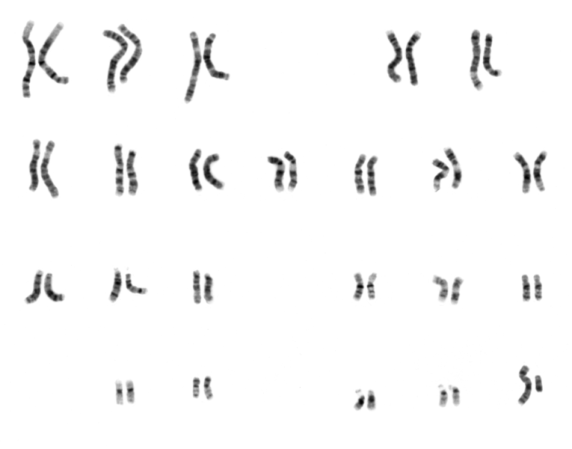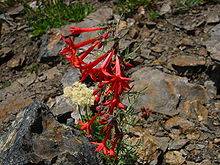The next time you prune your hedges or mow your grass, you may be doing the plants a favor. That’s because recent research has shown that some plants actually benefit from being damaged, growing larger, and producing more seed, and scientists are beginning to understand the mechanisms that allow this to happen.
Believe it or not, plants can benefit when animals eat them in nature, and this positive response is known as “overcompensation.” Although the possibility of overcompensation in plants has been discussed by scientists from a theoretical perspective, the first clear demonstration of it was from a study by Ken Paige, professor in Integrative Biology at the University of Illinois at Urbana-Champaign, in 1987. Since his initial studies, numerous examples of overcompensation have been found in a wide variety of plant species.
Although a vast amount of research has been performed on the phenomenon, how plants benefit from being damaged is only now becoming clearer. My research as a student in the Paige lab indicates that the amount of DNA, the genetic material in every one of an organism’s cells, actually increases within the plant after the plant is damaged. This process, termed “endoreduplication,” is common in most flowering plants and is relatively well-researched among molecular biologists. The vast majority of scientific studies focus only on how the process works, however, not how the DNA increase affects the whole plant.
Certainly no study has sought a link between endoreduplication and overcompensation of plants to herbivory, until now.
For my studies, I grew two varieties of mustard plant, both of the species Arabidopsis thaliana. One variety, Columbia, is an overcompensator — it typically increases its biomass and seed yield after being experimentally damaged — while the other variety, Landsberg erecta, is an undercompensator. Half of the individuals of each of these two varieties were clipped with scissors during their growth, simulating natural herbivory by small mammals, like rabbits. After regrowing to full maturity, the amount of DNA in the clipped and unclipped plants’ cells was measured.
“We found that the two varieties respond very differently to the clipping treatment,” says Ken Paige:
Columbia has higher seed yield when it is clipped relative to when it is undamaged, and this increase in productivity is associated with an increase in the cells’ DNA content. Landsberg erecta has no such increase in either seed yield or DNA.

A naturally-growing Arabidopsis thaliana plant.
Measuring seed yield is a common way for plant scientists to quantify the “fitness” of a plant, which indicates how well the plant is suited to its local conditions. The more seeds a plant can make, the more offspring it can potentially produce for the next generation, which is important for plants struggling to survive in an already dangerous world. Add herbivory to the mix, however, and plants are under intense pressure to produce seeds despite the damage.
Evidently Columbia has adapted to being damaged, while Landsberg erecta has not. Columbia’s ability to increase the amount of DNA in its cells might be one reason why.
So how does this process work, and what does it do for the plant? DNA replication, which doubles the amount of DNA in each cell, is a normal part of cell growth and development, but it is usually followed by cell division to make two cells so that the overall amount of DNA per cell stays the same. After damage, cell division after DNA replication is blocked in the plant so that the amount of DNA in each cell doubles with each round of replication.
This process can occur numerous times, and in the end, the plant might have up to 32-times the amount of DNA per cell as it did before it was damaged. The number of chromosomes (individual pieces of DNA) in the cell, therefore, increases dramatically. “Arabidopsis thaliana plants start with ten chromosomes per cell, with five coming from the plant’s mother and five coming from the father,” says Paige. “With each round of endoreduplication, that number doubles. After five rounds of replication, there are 320 chromosomes in the cell, or 64 copies of each unique chromosome.” What the plant does with all of that extra DNA is not well understood.

Human chromosomes. Chromosomes in plants are repeatedly replicated, doubling the total number of chromosomes per cell each time.
Increasing the amount of DNA contained within each cell does have a lot of effects on the size and function of the cells and, in turn, may affect the development of the whole plant. For example, increasing the amount of DNA in a cell increases the cell’s size just due to the increased bulk. If enough cells increase their size, the whole plant will also increase in size, which is advantageous for a plant that needs to regrow rapidly after being eaten. The increased cell size can also increase rates of water and nutrient uptake into the plant, as well as increase the surface area available for capturing light for photosynthesis.
The expression of genes, short stretches of DNA that encode all the outward characteristics of organisms, may also be influenced by DNA replication. Each chromosome is composed of a different set of genes, and so Arabidopsis thaliana’s five basic chromosomes contain five unique sets of genes. When the DNA is doubled, extra copies of all the genes are created. With so many extra copies in the cell, the rate of gene expression is potentially increased, aiding in the regrowth and development of the damaged plant. This is good news for Columbia, while Landsberg erecta does not fare as well. Current research seeks to uncover the genetic differences between the varieties.
Although Arabidopsis thaliana is native across much of Europe and eastern Asia, Columbia and Landsberg erecta are from the same population of plants in Poland and are therefore very closely related. The Landsberg erecta variety was initially created by exposing a Columbia plant to X-rays, which introduced hundreds of DNA mutations. These mutations cause numerous genetic differences between Columbia and Landsberg erecta, but the specific genes causing the differences we see in overcompensation and endoreduplication are largely unknown.
 Genetic differences may also be due to historical differences in natural herbivory. The pressure to recover from damage is only present if herbivory is a real threat to the plant. Without herbivore attack, the plants tend to lose the ability to recover from the damage, or never gain it at all. Paige has studied another species of plant, Ipomopsis aggregata (pictured right), under natural herbivory by elk and mule deer in the mountains of Arizona and Colorado: “Plants from populations that are not regularly eaten by herbivores do not tolerate the damage well. In other populations, where herbivores damage about eighty percent of the plants every year, overcompensation is much more common.”
Genetic differences may also be due to historical differences in natural herbivory. The pressure to recover from damage is only present if herbivory is a real threat to the plant. Without herbivore attack, the plants tend to lose the ability to recover from the damage, or never gain it at all. Paige has studied another species of plant, Ipomopsis aggregata (pictured right), under natural herbivory by elk and mule deer in the mountains of Arizona and Colorado: “Plants from populations that are not regularly eaten by herbivores do not tolerate the damage well. In other populations, where herbivores damage about eighty percent of the plants every year, overcompensation is much more common.”
This research represents one more step in the process of understanding the phenomenon of overcompensation. The ability of a plant to benefit from being eaten is certainly counterintuitive, but the molecular and cellular mechanisms allowing this to happen are now being revealed. As it turns out, increasing the amount of DNA by endoreduplication seems to affect cell size, gene expression, and metabolic processes that ultimately promote plant regrowth.
After regrowing, the plant is bigger, with more branches and seeds, and overall seems to benefit from the damage. Certainly there is a lot that we do not yet know going on in the plant before and after DNA replication, but these findings give us clues for further research to understand this paradox of plant performance.
Written by Daniel Scholes, PhD candidate in the Program in Ecology, Evolution, and Conservation Biology at the University of Illinois.
~~*~~
Smile Politely is proud to introduce a new running series we are calling “Science Politely” that will feature the work of graduate students at the University of Illinois throughout November and December. Working in collaboration with the students in a graduate course in Integrative Biology, Science Politely is a collaboration aimed at bridging the gap between town and university, between scientist and citizen, and between research and culture.








